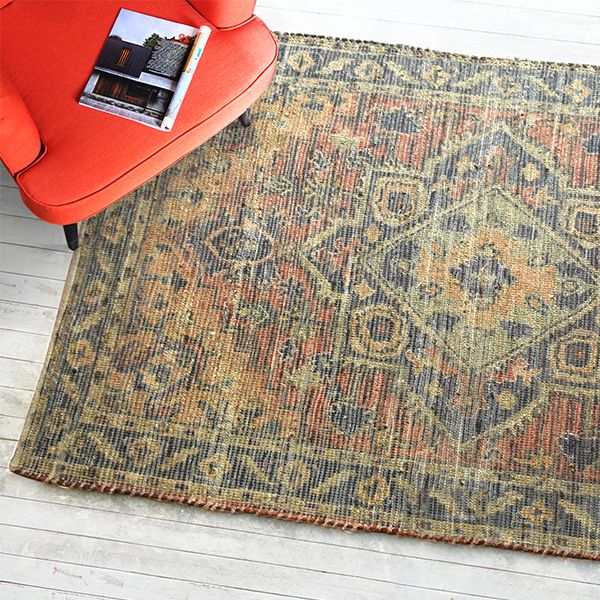Indian handicraft is like the soul of the Nation. The craftsmen of India have mesmerized all since time immemorial through their finesse and artistic flare, which is shown through the intricate stone inlay work, the beautiful woodcarvings and the magical carpet making.
History
says it all and shows how for ages the royals have valued the art of carpet
making and used the beautiful hand-made carpets as a decorative jewel for their
palaces. The Mughals brought in the tradition of carpet making and since then
we can find some of the world’s best carpets in India. The invaders and traders from across the world
have envied us and looted these impeccable pieces considering the intricate
work done in these carpets, no less than The Kohinoor.
Where Can We See the High-Quality Classic Carpets?
Carpets made from fabrics like silk and wool are perfect to add a touch of class and give a super luxurious feel. Make these beauties a part of your drawing area for an instant transformation and add a royal look to your decor. Traditional carpets work amazingly well when placed in a huge area like a hotel lobby or a big dining area of a palatial property.
With several popular brands giving services like ‘Carpets to buy online’ royal homes across the globe have access to handmade carpets and oriental designs with the convenience of having them delivered at their doorstep. Having a traditional carpet as part of your decor is like adorning an evergreen classic jewel to create a charm of ethnic and legendary craftsmanship in the most sophisticated manner.
Many traditional
carpets are a part of the elaborate exhibits of museums all around the world as
the skill of carpet making is so ancient that its growth and evolution over
years itself is something to admire.
 |
| Carpets to Buy Online |
The Hidden Tales That a Traditional Rug Entails
Every
pattern, color, weave style, and design technique that a carpet uses tells so
much about it. The visual that is curated with a combination of all these is
what attracts one, but as you come closer to take a good look, each color used
and each pattern weaved helps one trace back to the era to which it belongs.
Mughal-styled carpets have extensive use of floral patterns and can be seen in rich velvet silk material. As Agra was the base for the Mughals in ancient times, the heritage and culture of carpet making is found strong in the cities of Bhadohi, Mirzapur and Agra in Uttar Pradesh. The designs crafted here include the Persian-style carpets that are simple and elegant with a floral detailed border.
Other varieties associated with this region include Turkman and Abussan
designs that are identified with their bold yet realistic patterns. The carpets
that originate from Bhadohi region are the true reflection of the soul of the
native artisans. Each design is so unique in itself that it makes you fall in
love with the purity and simplicity with which it is weaved.
Looking at a geometric patterned Kashmir carpet one can trace back their place of origin and tribal inspiration by identifying the motifs used in the design. The most popular motif found in larger Kashmiri carpets is the medallion placed mostly towards the center.
Kashmiri carpets are mostly made using the hand-knotting
technique and are also known as oriental rugs and carpets. Made with fine
materials like silk and wool they are a delight for the eyes and are admired
for their softness.
 |
| Fulmer Rug |
Persian carpets are popular all over the world. This Multi Color rug is loved for the use of elaborate colors and artistic designs. To preserve the memory and charm of this ancient tradition of Iran we see many Persian rugs as a part of museums and private collections all over the world. The weave style that is used in such rugs is what indicates their place of origin. Regions of Tabriz, Kerman, Neyshabour, Mashhad, Kashan, Isfahan, Nain, and Qom are associated with a particular weave style and the use of plush materials.
The modern production of these carpets tries to incorporate the traditional tribal patterns and make use of natural dyes to create innovative designs while still attempting to retain the traditional weaving techniques to the best. The Persian designs are taken as inspiration and amalgamated with Indian designs to create an Indian-origin variant known as the Indo-Islamic carpets.
The
craftsmen of Rajasthan also add to the collection of Indian rugs with some
premium quality hand-knotted carpets made in wool. Bikaner, Jaipur, and Ajmer
are the three most famous regions of Rajasthan, well known for carpet making.
The carpets from this region come in various vibrant color options with the use
of geometric motifs making them quite versatile and easy to incorporate in one’s
home decor. These carpets have become quite a favorite around the globe and are
exported all around in abundance.


